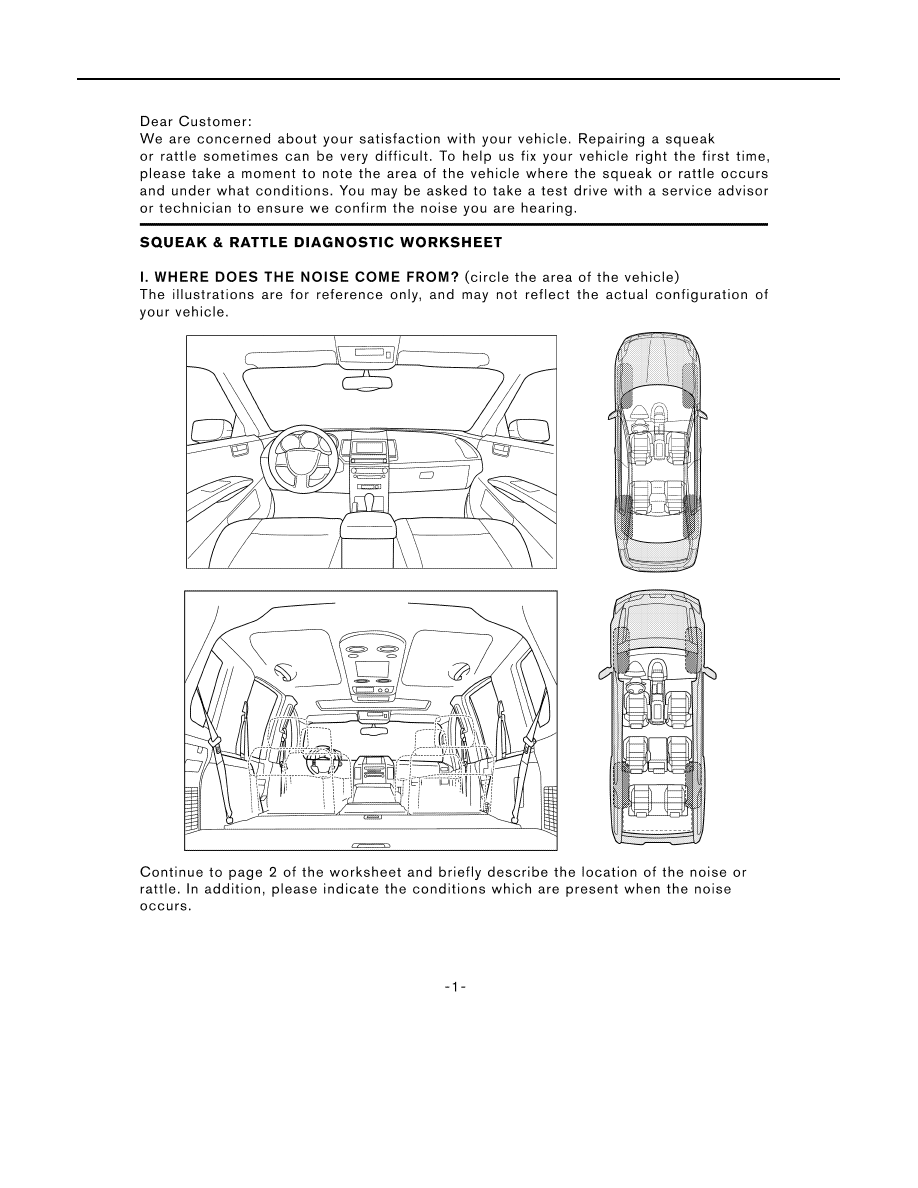Nissan Altima HL32 Hybrid. Instruction - part 978

SE-14
< SYMPTOM DIAGNOSIS >
SQUEAK AND RATTLE TROUBLE DIAGNOSES
Diagnostic Worksheet
INFOID:0000000004215450
LAIA0072E
|
|
|

SE-14 < SYMPTOM DIAGNOSIS > SQUEAK AND RATTLE TROUBLE DIAGNOSES Diagnostic Worksheet INFOID:0000000004215450 LAIA0072E |